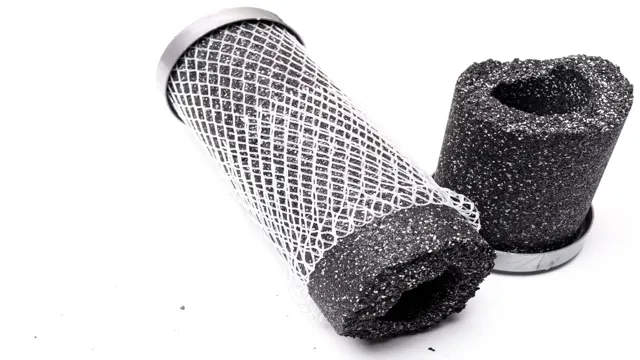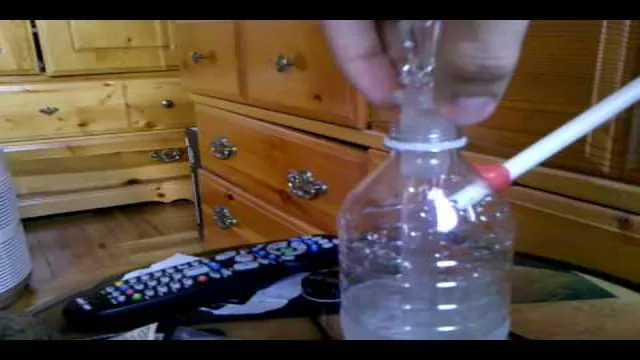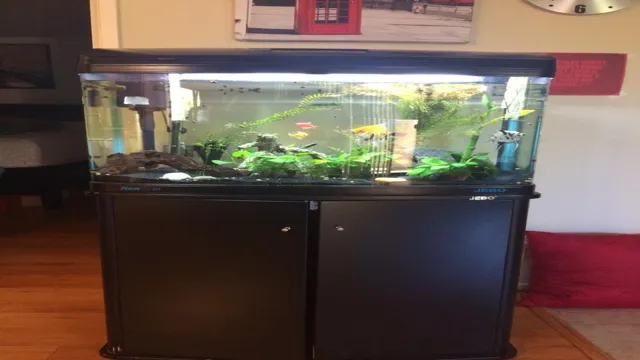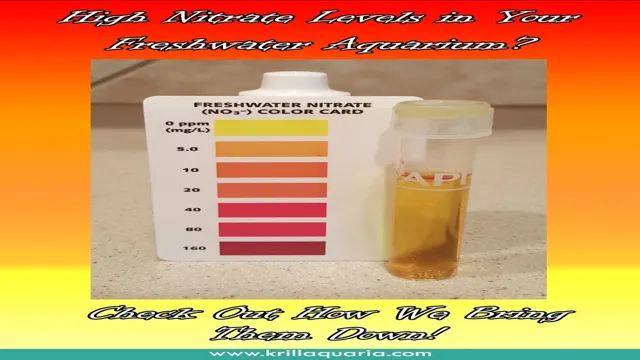Are you busy scouting ways to transform your aquarium into an alluring and captivating rock wonderland? Well, then you’ve landed yourself in the right place! Incorporating rocks into your aquarium is an ideal way of enhancing your décor and providing hiding places for your aquatic buddies. However, it’s also essential to make those rocks aquarium-safe to protect your fish and other creatures from harm. Before adding rocks to your aquarium, it’s vital to conduct thorough research on the types of rocks suitable for your aquarium.
Keep in mind that not all rocks are aquarium-safe, and some may contain substances that can harm your aquatic creatures. Ensuring that your rock selection is compatible with your aquarium environment is key to prevent any accidents. But how can you make your rock aquarium-safe? One way is to clean the rocks thoroughly before placing them in your aquarium.
Scrubbing and boiling your rocks is an effective way to eliminate any dirt, grime, bacteria, and other impurities. It’s also crucial to ensure the rocks don’t have any sharp edges that could harm your aquatic creatures or damage your aquarium equipment. Another important thing to consider when making your rock aquarium-safe is its pH levels.
The rocks’ chemistry could change the water’s pH balance, creating hazardous conditions for your precious aquatic creatures. To avoid this, research your chosen rocks’ composition and ensure they’re suitable for your aquarium environment. In conclusion, making your rock aquarium-safe requires some research, preparation, and attention to detail.
But with these simple tips, you can create a stunning and hazard-free underwater world for your beloved aquatic creatures. Whether you choose granite, slate, or limestone, coming up with an aquarium design that’s both aesthetically pleasing and safe for your aquatic friends is easy as pie!
Why Safety is Important
If you’re looking to create a stunning rock aquarium, safety should be a top priority. Your fish and other aquatic life depend on you to provide a safe environment for them to thrive in, and rocks can pose a potential danger. To make your rock aquarium safe, start by choosing rocks that won’t leach harmful chemicals or minerals into the water.
It’s also important to properly clean and prepare the rocks before adding them to the aquarium. Sharp edges and uneven surfaces can harm fish and scratch the aquarium glass, so be sure to smooth out any rough spots. Another safety consideration is the weight of the rocks.
Large, heavy rocks can shift and cause damage to the aquarium, so choose a size that’s appropriate for your setup. By taking these steps, you can create a beautiful rock aquarium that not only looks great but also provides a safe and healthy environment for your aquatic friends to thrive in.
Ensuring the Health of Your Fish
As a fish owner, it is crucial to prioritize the safety and well-being of your aquatic pets. Not only does this ensure the longevity and health of your fish, but it also lessens the likelihood of illnesses and fatalities within your aquarium. In addition, maintaining a safe and secure environment for your fish can also prevent the spread of diseases and infections to other aquatic life in your tank.
When it comes to safety, prevention is key, and taking necessary precautions such as regularly cleaning your tank, monitoring the temperature and chemical balance, and providing proper nutrition, can go a long way in keeping your fish healthy. Ultimately, placing a high value on the safety and health of your fish is vital in creating a thriving and enjoyable aquatic habitat for everyone involved.
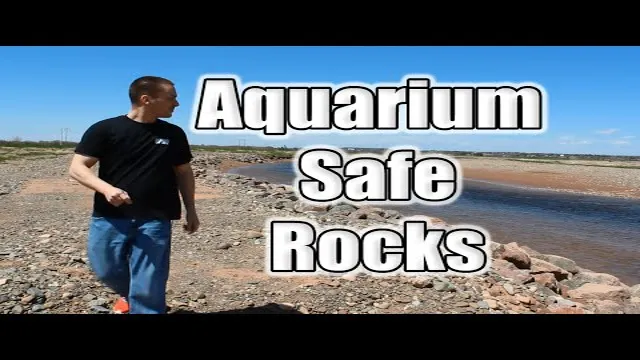
Prevent Water Contamination
Preventing water contamination is crucial because it directly affects our health and the environment around us. Unsafe water can be a breeding ground for harmful bacteria and viruses that can cause illness and disease. Chemicals and pollutants can also seep into our water supply, leading to long-term health issues.
It is our responsibility to ensure that we dispose of waste, chemicals, and other harmful substances properly. Additionally, proper maintenance of septic tanks and sewage systems is vital to prevent contamination of groundwater sources. We must all take steps to protect our water sources as it plays a vital role in our daily lives, from bathing to cooking and everything in between.
So let us all do our part to keep our water sources clean and safe for generations to come.
Selecting the Right Rocks
When it comes to creating an aquarium, selecting the right rocks is essential to make it safe for your aquatic pets. Not all rocks are aquarium-friendly, and some may contain harmful substances that could harm or even kill your fish and other aquatic animals. Avoid using rocks that have sharp edges or edges that could trap your fish.
Instead, choose smooth rocks with rounded edges that won’t harm your fish or hinder their movements. The best rocks for an aquarium are inert, meaning that they won’t affect the pH or water quality of your tank. Some common aquarium-safe rocks include granite, quartz, and lava rocks.
When selecting rocks, it’s also important to thoroughly clean and disinfect them to ensure that they are free of any harmful bacteria or algae. With the right rocks, you can create a beautiful and safe environment for your aquatic pets to thrive in.
Avoid Porous Rocks
When it comes to creating a rock garden, selecting the right rocks is crucial. You want to choose rocks that are durable and can withstand the elements without deteriorating quickly. Porous rocks, such as sandstone, can be a poor choice as they are susceptible to erosion over time. (See Also: How to Make High-Quality Aquarium Safe Decorations: Tips and Tricks)
This can cause them to crumble and become unsightly. Opt for non-porous rocks like granite or basalt as they are much more resilient and will last for years to come. Porous rocks may be tempting due to their unique textures and colors, but they simply aren’t practical for a long-lasting rock garden.
Remember, it’s important to think about the longevity of your garden and select the right materials accordingly. Don’t let the allure of a pretty rock overshadow the practicality of its durability.
Avoid Rocks with Sharp Edges
Selecting the right rocks for your landscaping project is crucial to ensure a long-lasting and visually appealing feature. One thing to keep in mind is the avoidance of rocks with sharp edges. Sharp edges can not only be unattractive, but they can also be dangerous, especially for children or pets who may be playing in the area.
When selecting rocks, look for ones that have smooth edges or are naturally rounded. If you come across a rock that may have sharp edges, carefully inspect it to make sure it won’t pose a risk. Choosing the right rocks for your project can make all the difference, not only in functionality but also in aesthetics.
By keeping sharp-edged rocks out of the equation, you can create a safer and more visually pleasing area to enjoy.
Avoid Rocks with Coatings or Paints
When it comes to selecting rocks for your landscaping project, it’s essential to choose the right type of rocks that will not only look great but also last long in your outdoor space. One critical factor to consider is avoiding rocks with coatings or paints. While painted rocks may seem attractive at first, the coatings can quickly wear off, making the rocks look dull and unappealing.
These coatings can also harm plants and wildlife around them. Instead, it’s best to opt for natural rocks that have not been treated with any finishes. Not only will these rocks blend in naturally with your surroundings, but they’ll also last longer and can withstand harsh weather conditions.
By avoiding painted rocks, you’ll be making an eco-friendly choice that benefits your garden’s health in the long run.
Preparation before Adding Rocks
If you’re thinking of adding rocks to your aquarium, there are a few things you need to do beforehand to make sure they’re safe for your fish and other aquatic creatures. First, you’ll want to clean the rocks thoroughly to remove any debris or contaminants that could harm your aquatic pets. You can do this by washing them in warm water and vinegar or using a specialized aquarium rock cleaner.
Once the rocks are clean, you’ll need to test them for pH and hardness levels to make sure they won’t negatively impact your water parameters. Finally, you’ll want to consider the size and shape of the rocks to ensure they won’t create any dangerous hiding spots or trap your fish. By taking these steps, you can create a beautiful and safe aquarium for your aquatic friends to enjoy.
And remember, always use rocks that are specifically designed for aquariums, as rocks from outside can contain harmful bacteria and other contaminants.
Wash the Rocks Thoroughly
Before adding rocks to your aquarium, it is crucial to wash them thoroughly to remove any dirt or debris that could negatively impact your water quality. Washing the rocks is an essential step in preparing your aquarium for the new addition. One way to accomplish this task is by rinsing the rocks under running water and scrubbing them with a stiff brush to remove any ingrained dirt.
Alternatively, you can soak your rocks in a bucket of water for a few days and scrub them once the water becomes dirty. It’s important to note that you should never use any soap or detergents when cleaning your rocks, as these can leave harmful residues that can harm your fish and other aquatic creatures. Regularly cleaning your rocks will help keep your aquarium healthy and looking great.
Remember to always put your fish first when adding anything new to their environment, and your aquarium will become a beautiful and happy habitat for your aquatic pets.
Disinfect the Rocks
Before adding rocks to your aquarium, it’s important to prepare them properly. This includes disinfecting them to prevent the spread of harmful bacteria. Start by rinsing the rocks thoroughly in plain water to remove any loose dirt and debris.
Then, soak them in a solution of water and aquarium-safe disinfectant for at least 24 hours. Be sure to follow the instructions on the disinfectant carefully, as some may require a specific dilution ratio or a longer soaking time. Once the rocks have soaked, rinse them thoroughly in plain water again to remove any remaining disinfectant. (See Also: How to Give Aquarium Snails Calcium: Tips and Tricks for Boosting Their Health)
This process may seem time-consuming, but it’s essential for the health of your aquarium inhabitants. Make sure to repeat the disinfection process regularly to prevent any harmful bacteria from accumulating in your tank. Keeping a clean aquarium is crucial for the well-being of your fish, so take the necessary steps to ensure they thrive in a safe and healthy environment.
Adding Rocks to Your Aquarium
Adding rocks to your aquarium can be a great way to create a more natural and visually appealing environment for your fish. However, it’s important to make sure that the rocks you choose are safe for your aquatic pets. To make rocks safe for your aquarium, you should start by cleaning them thoroughly to remove any dust, dirt, or debris.
You can do this by using a soft brush and warm water, or by soaking them in a bucket of water for a few hours. Once the rocks are clean, you’ll need to test them for any harmful chemicals or minerals that could harm your fish. This can be done by using a simple vinegar test.
If the rock fizzes when you apply vinegar, it’s not safe for your aquarium. Once you’ve found a few safe rocks that you like, you can arrange them in your aquarium to create different levels and hiding places for your fish. With a little bit of planning and some careful selection, you can create a stunning and safe rock aquarium for your pets to enjoy!
Arranging the Rocks
Adding rocks to your aquarium can not only enhance the aesthetic appeal but also improve the overall health of your fish by creating hiding spots and areas for beneficial bacteria to flourish. When arranging the rocks in your aquarium, it’s important to keep in mind the size and weight of the rocks and ensure that they are securely placed to avoid potential hazards for your fish. Start by laying out the larger rocks as the foundation and then build up with smaller rocks to create depth and dimension.
Don’t forget to leave ample swimming space for your fish. It’s also important to consider the type of rocks used, as some rocks can alter the water chemistry and harm your fish. Non-porous rocks such as quartz or granite are safe options, while porous rocks like limestone or sandstone should be avoided.
By carefully selecting and arranging rocks, you can create a beautiful and functional environment for your aquatic pets.
Creating Crevices and Caves
Adding rocks to your aquarium can serve as a beautiful aesthetic addition while also providing necessary complexity for your underwater ecosystem. Creating crevices and caves using textured rocks not only adds visual appeal to your tank, but it also gives your fish a place to hide and explore. Choosing the right type of rock is key to creating a successful aquascape.
Avoid using limestone or any rocks that may alter the water chemistry. Opt for aquarium-safe materials such as granite or lava rock. When placing the rocks, be sure to stack them in a way that ensures stability and leaves room for fish to swim through and hide.
Add some aquatic plants around the base of the rocks to create a natural look and feel. With careful consideration and placement, adding rocks to your aquarium can enhance the overall health and liveliness of your aquatic ecosystem.
Maintenance Tips
If you’re looking to create a rock aquarium, safety should be at the top of your priority list. So, how do you make sure that your aquarium is safe for your fishy friends? First, choose the right rock. Not all rocks are safe for aquarium use, so it’s crucial to do your research and avoid any that may leach harmful chemicals or minerals into the water.
Secondly, properly clean your rocks before placing them in the aquarium. Use a mild detergent and hot water to remove any dirt or debris, and rinse them thoroughly to ensure no chemicals remain. Lastly, test the water to ensure that the pH levels and hardness are suitable for your fish.
By following these simple steps, you’ll be able to create a beautiful and safe rock aquarium for your aquatic pets to enjoy. So, go ahead and get creative with your rock decor, just remember to prioritize safety first!
Routine Cleaning
Maintaining a routine cleaning schedule is essential to extend the lifespan of your home appliances and keep them working efficiently. It’s easy to overlook cleaning appliances as part of the regular cleaning routine, but it can lead to the accumulation of dust, dirt, and debris that can cause them to malfunction or even break down. Consider wiping down the exterior of appliances like the refrigerator, oven, and dishwasher with a damp cloth regularly.
For hard-to-reach places, use a vacuum with an extension wand or a soft-bristled brush to dislodge any dust or debris. Maintain the filters, whether it be on the HVAC or dishwasher, by cleaning them regularly. By incorporating these maintenance tips into your cleaning routine, you’ll be ensuring your appliances work their best for years.
Regular Water Testing
Regular water testing is an essential part of maintaining a safe and healthy environment for you and your family. Water can contain various contaminants that can pose serious health risks if left unchecked. By regularly testing your water, you can identify any potential issues early and take the necessary steps to address them. (See Also: How to Clean Aquarium After Fish Dies: A Comprehensive Guide to Preventing Harmful Bacteria Growth)
There are many different types of water tests available, covering everything from bacteria and viruses to heavy metals and chemicals. Some tests can be done at home, while others require professional assistance. Either way, it’s important to make water testing a routine part of your maintenance plan to ensure the safety of your drinking water.
So, don’t overlook this crucial aspect of home maintenance and make sure you test your water regularly.
Keep an Eye Out for Signs of Distress
When it comes to maintaining your home, it’s essential to keep an eye out for signs of distress. Whether it’s a leaky faucet or cracks in the walls, it’s important to address these issues as soon as possible. Not only can they lead to further damage, but they can also be a safety hazard.
For instance, if you notice water stains on your ceiling, this could be a sign of a leak. If left unchecked, it could lead to mold growth and even structural damage. Similarly, if you see cracks in your foundation, this could be a warning sign of serious structural issues.
By taking care of these problems early, you can avoid costly repairs down the line. Remember, prevention is the key to keeping your home in top shape!
Conclusion
In conclusion, creating a safe rock aquarium is no small feat! But with a little bit of know-how, careful selection, and conscientious maintenance, your fishies will be swimming happy and healthy in a picturesque underwater paradise. Just remember to test your water regularly, avoid reactive rocks, and always stay rock-solid with your aquarium maintenance routine. With these tips in mind, you’ll be the envy of all your finned friends!”
FAQs
What materials are needed to make a rock aquarium safe?
To make a rock aquarium safe, you will need aquarium safe sealant, non-toxic aquarium safe rocks, and a water testing kit.
Can any type of rock be used in a rock aquarium?
No, only aquarium safe rocks should be used in a rock aquarium, as other types of rocks can have chemicals or minerals that are harmful to aquatic life.
How do you test if the rocks are aquarium safe?
You can test the rocks by pouring vinegar on them. If bubbles form, then they are not safe to use in a rock aquarium.
How do you clean rocks before putting them in an aquarium?
The rocks should be scrubbed with a brush and rinsed well with water. Then, they should be soaked in a solution of bleach and water (1 part bleach to 19 parts water) for 24 hours. After that, rinse them with water again and let them dry completely.
How long should you wait before adding fish or plants to the aquarium?
You should wait at least 48 hours after setting up the rock aquarium to ensure that the water parameters are stable and safe for aquatic life.
What are some common mistakes to avoid when setting up a rock aquarium?
Some common mistakes include using too many rocks, not checking if the rocks are aquarium safe, and not allowing enough time for the aquarium to cycle before adding fish or plants.
Can rocks be rearranged in a rock aquarium after it has been established?
Yes, but it is important to be careful and not disturb the substrate too much, as this can cause ammonia spikes and harm aquatic life.


